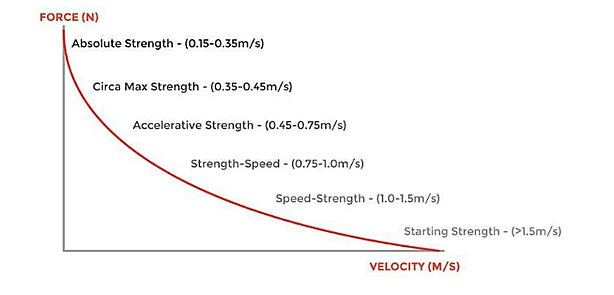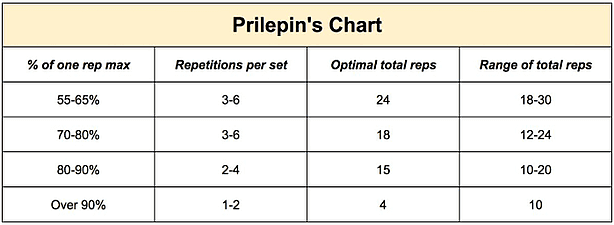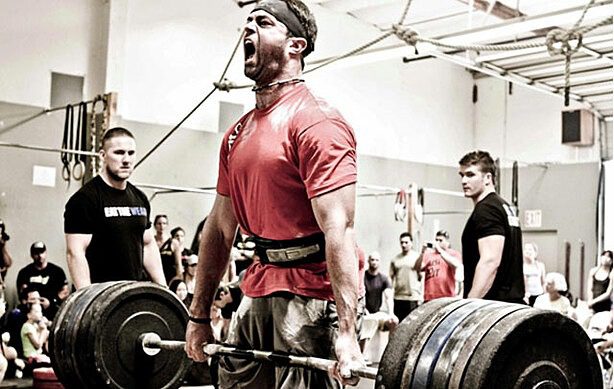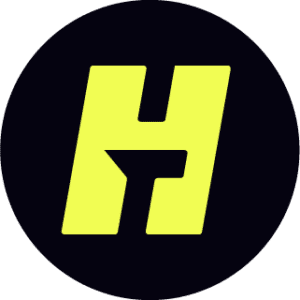3 Scientifically-Proven Methods to Build Raw Strength
TOPIC: Strength & Conditioning
You see, strength is sexy. Raw, eye-popping strength is something everybody wants, but very few can achieve. Those who are able to achieve it unlock a whole new world both inside and outside of the gym.
Now, why is freakish strength so hard to attain? Is it because most people don’t have the genetics, internal drive, or know-how?
Well, maybe…
But, in my opinion, the root cause is that people are not willing to reach the point of physical discomfort required to gain such a level of superhuman strength.
All that said, I am going to proceed with this article under the assumption that you are a freaking beast willing to push your limits. I am assuming you are the type that can get crushed on a set of squats, shake your legs out, throw an extra slab on the bar, and attack the next set because you’re willing to sell out in order to reach a level of strength few people dare achieve.
Each of these three methods has been backed by research, but more importantly, they have been proven effective in the racks and on the training floor of some of the strongest gyms in the world.
Let’s dig in…

Written By
ROB VAN VALKENBURGH
Rob Van Valkenburgh joins the TrainHeroic blog with 10 years of experience in the strength game. Having coached elite athletes in both the private sector and the Division 1 collegiate setting, Rob believes that strength has to be the foundation of all athletic movement and that athletes of all levels deserve a comprehensive strength program. Rob writes regularly on his website FootballStrengthCoach.com where he shares short-form articles, training tips & programs, and other items related to strength and performance for football.
Website
Fact: “The strong are generally more useful and harder to kill.” – Mark Rippetoe

1) Cluster Set Training
One of the best ways to drastically build maximal strength is through the use of cluster sets. This style of training teaches your body how to handle itself under a near maximal load and how to do this repeatedly over a short duration.
The cluster set method allows you to take intra-set rest intervals in order to produce greater contractions, so you get more volume with a high percentage of your 1 rep max.
Moreover, it allows your reps to be extremely high quality. With a traditional 3-6 rep scheme, you may have to grind through the last few reps. Whereas when using a cluster approach, you will have the contractile ability to keep the quality of each rep very high.
There are two main variations of cluster set training: Extensive Clustering and Intensive Clustering.
- Extensive clustering is completed with a weight equal to your 4-6 rep max and much shorter rest breaks (about 10-20 seconds). *This method is ideal for building strength endurance, not maximal strength.*
- Intensive clustering is completed with 75-90% (or higher if you’re physically ready) of your 1 rep max with a longer rest interval (10-30 seconds).
For our purposes, we will discuss intensive cluster set training as it is the variation of clustering that builds maximal strength.
Most people do not spend enough time training close to their one rep max. They work up to a couple heavy singles or do a traditional 5X5 approach. The absolute beauty of cluster sets is that you can do 4-15 reps at or above 90% of your training max. The way you approach this is to do a high volume of reps broken apart with 10-30 seconds of rest between each set.
This approach allows you to now complete a high volume of absolute strength work at or near your training max. By doing this, you are teaching your body how to respond under a heavy load. In addition, by consistently training above 90% of your training max, the contractile abilities of your muscles will greatly increase because of the intense demand you place upon them.
2) Post-Activation Potentiation and the Use of Complex Training
Post-Activation Potentiation (PAP) is one of the best ways to build speed-based strength. The term potentiation as it relates to strength training is defined as “the increase in the strength of nerve impulses along pathways that have been used previously.”
Essentially, to potentiate means to improve or enhance.
At its root, PAP is a form of complex training. Complex training is an approach that combines the execution of a heavy resistance exercise directly followed by an explosive movement that has similar biomechanical characteristics.
These two movements, when combined, are referred to as a complex pair. Muscles are both conditioned to and affected by their contractile history. PAP allows you to perform two very similar movements while training different points on the Force-Velocity Curve while enhancing mechanical power and the performance of your chosen movement.

The foundation behind PAP, on a cellular level, is that this style of training enhances the binding rates of contractile proteins which causes faster muscle contractions. When muscle contracts faster, more power is produced.
Essentially, by lifting a near-maximal load directly followed by an explosive movement, you will enhance the power output of the plyometric. This will increase your absolute strength by teaching your muscle fibers to contract faster and produce a higher amount of power when training for maximal strength.
“Resistance training programs which incorporate plyometrics are superior to those that do not include plyometrics.” –Verkhoshansky
Sample Complex Pairs and Sets/Rep Schemes
For maximal strength training, PAP is used by combining a strength movement (typically above 90%) directly followed by an explosive movement that mimics the strength movement. Think of a heavy box squat directly followed by a box jump or a deadlift followed by a broad jump.

This potentiation causes the body to be tricked during the explosive movement and generate the same contractile force as under the heavy load of the strength movement.
When doing PAP work, it is important to remember that this is very taxing on your nervous system and should not be done more than two times per week. In addition, this style should be reserved for experienced lifters who are competent with 90%+ of their one rep max on the bar and have the neuromuscular competency to perform a strenuous lift directly followed by an explosive movement.
3)The Use of Prilepin’s Chart
One of the little known ways a ton of Russians and other Eastern European lifters programmed their strength cycles was with the use of Prilepin’s chart. This chart breaks down the optimal sets and reps you should use based on a specific percentage of your one rep max.
Essentially this is your road map for designating training cycles for your focus lifts (bench, squat, deadlift, etc.).

So, how do you decipher this chart?
First, the chart gives you a ‘total range’ and ‘optimal range.’ For your purposes, focus on the ‘optimal range’ and begin to build your program to hit that exact rep range.
When setting up your sets, start by analyzing how you move under that specific load.
- Does your form break down after a certain number of reps?
- How is your bar speed after 2-3 reps?
Once you look at those factors, you can begin to program.
If you notice that after 3 reps at a specific weight you lose bar speed, then you won’t program more than three reps. For example, if you are doing 55-65% and your optimal reps are 24, you will want to do 8 sets of 3 reps while focusing on bar speed. If you are lifting 90%+ with an optimal rep count of 4, you will want to do 4 sets of 1.
By sticking closely to this chart, you will set yourself up for success by programming exactly what your body can handle. This is also a great way to limit overtraining or putting too much volume in each training session. This chart is used in a great majority of college weight rooms for a reason. Plain and simple: it works.
Not to mention, it may be the world’s easiest and most flexible guide to setting up your training. Follow the percentages, build your set/rep scheme to fit, and get to work.
SAMPLE 3 WEEK CYCLE
Bench Press Intensive Cluster Set
WEEK 1
Goal: 15 Reps @ 87.5%
5 sets of 3 reps
WEEK 2
Goal: 12 Reps @ 90%
6 sets of 2 reps
WEEK 3
Goal: 5 Reps @ 92.5%
5 sets of 1 rep
Implementing These Three Methods
Now, all these methods are great and extremely effective, but without proper implementation they are useless. If you are a coach, it is your job to ensure that your athletes are ready for this type of training.
The issue most coaches run into is they want to give the athletes lifts and movements that look cool and challenges the athlete, but in most cases the athlete is not ready for this level of intensity. So, as a general guideline, the above training methods should be reserved for very seasoned lifters with at least a training age of two years.

Even more, never sacrifice form or range of motion in order to hit a big weight. If you focus on technique, the long-term training effects will be greater than if you sacrifice technique for short-term strength gains.
It is also important to remember that regardless of the method you choose to use, maximal strength produced through training is retained for longer if it is built on a foundation of muscle hypertrophy. All of these methods increase neuromuscular efficiency and will therefore increase maximal strength as a byproduct of improved contractile functioning. However, without a rock-solid foundation of muscle hypertrophy, strength gains will decline more rapidly.
These three training methods are just a small piece of the pie. If you are serious about building ungodly amounts of strength, you will have to commit yourself to years of dedicated work. Make sure that you find a training approach that agrees with your body type and allows you to train injury free while aggressively training for maximal strength.
References
Post-Activation Potentiation – Underlying Physiology and Implications for Motor Performance
Journal of Sports Medicine July 2005
Matt Hodgson, David Docherty, Dan Robbins
Factors Modulating Post-Activation Potentiation and its Effects on Performance of Subsequent Explosive Activities
Journal of Sports Medicine February 2009
Training for Power and Speed
Functional Resistance Training
Bram Swinnen
Cluster Training: A Novel Method for Introducing Training Program Variation
The Strength and Conditioning Journal February 2008
Gregory Halt, et all.
Supertraining
Mel Siff
Find Your Perfect Training Plan
Sometimes all you need to reach your destination on your fitness journey is an expert guide. Look no further, we've got you covered. Browse from thousands of programs for any goal and every type of athlete.
Try any programming subscription FREE for 7 days!
Related Articles
You May Also Like...
The Ultimate Guide to Lunges: Queen of all Glute Exercises
Your glutes are the largest muscle group in your body. They’re responsible for almost everything your legs do—walking, running, jumping, squatting, lunging, and just standing upright. As far as moving through space goes, strong glutes are the bedrock of overall...
A Beginner’s Guide to Steel Mace Training
Think you’ve mastered kettlebells? Meet the steel mace — the brutal, offset weapon that forces your body into three-dimensional stability, grip work, and rotational strength. Ancient tool. Modern performance.Written Byjesse grund Jesse Grund’s passion is simple: coach...
The Best Bench Press Warm Up Strategy
We get it. You’re pressed for time in the gym. But skipping the warm up is the surest way to underperform and risk injury. This 3D approach to your bench press warm up not only allows you to lift more weight, but also ensures the long-term health of your shoulder...
The Ultimate Guide to Lunges: Queen of all Glute Exercises
Your glutes are the largest muscle group in your body. They’re responsible for almost everything your legs do—walking, running, jumping, squatting, lunging, and just standing upright. As far as moving through space goes, strong glutes are the bedrock of overall...
A Beginner’s Guide to Steel Mace Training
Author: Jesse Grund
Mace training will make you a better mover without it’s not confining you to a fixed space or predetermined range of motion. Second, it’s an offset load with 80 to 90 percent of the weight in the head. You’re also constantly having to resist rotation, which creates greater core engagement.

Want more training content?
Subscribe
For Coaches
For Athletes
About
Support
Training Lab
Access the latest articles, reviews, and case studies from the top strength and conditioning minds in the TH Training Lab!
Made with love, sweat, protein isolate and hard work in Denver, CO
© 2024 TrainHeroic, Inc. All rights reserved.





